- Home
- Bobby Akart
Geostorm the Shift Page 2
Geostorm the Shift Read online
Page 2
Aviation would probably need to be halted in order to take into account the pole shift, our satellites would need to be redesigned and repositioned, and the planet’s power grids could collapse under the weight of the solar particles that are ordinarily deflected, but allowed to pass through the weakened magnetic field.
That being said, while scientists are unwilling to predict exactly when the next full reversal will occur, most don’t think it could lead to a mass extinction event unless humans have evolved to the point where they, literally, can’t live without their electronic devices.
And we’re not there yet … right?
Right?
Thank you for reading the Geostorm series.
Real-World News Excerpts
WHEN OUR MAGNETIC FIELD FLIPS, SAY GOODBYE TO MODERN LIFE
~ Canadian Broadcasting Corporation, CBC online, January 27, 2018
Scientists say the magnetic North Pole will eventually switch places with the South Pole, with potentially apocalyptic results.
Scientists are investigating the vital role our magnetic field plays and are concerned about how our planet will lose protection from solar radiation storms that will wipe out all electromagnetic technology. The result would be no satellites, no internet, no smartphones and maybe no power grid at all.
SOON, EARTH’S MAGNETIC POLES COULD FLIP
~ FUTURISM Magazine, February 16, 2017
The polarity created by the magnetic field isn’t a universal constant. In the history of our planet, the poles have completely reversed a number of times. And while complete reversals have been somewhat irregular, we are currently long overdue for the poles to swap again.
What would be the most likely thing to harm humans if the poles were to reverse again would be the ways in which a disturbance in Earth’s electromagnetic field would mess with all of our technological devices. Earth-bound power grids could experience interruptions, or catastrophic failures, under the altered circumstances.
MILLIONS OF YEARS AGO, THE POLES MOVED AND IT COULD HAVE TRIGGERED AN ICE AGE
~ DISCOVER Magazine, November 2018
Geologists at Rice University have uncovered evidence that suggests Earth’s spin axis was in a different spot millions of years ago, a phenomenon called “true polar wander.” The change would have shifted Greenland further up into the Arctic Circle—which may have contributed to the onset of the last major Ice Age.
Long ago, the North Pole would have been closer to Greenland than it is now, and the South Pole would have shifted similarly to the west. This sudden shift could have had serious effects on the Earth’s climate, said the researchers.
EARTH’S MAGNETIC FIELD CAN REVERSE POLES RIDICULOUSLY QUICKLY, STUDY SUGGESTS
~ Live Science Online, August 23, 2018
Like the invisible force shield around the (fictional Star Wars) Death Star, Earth’s magnetic field surrounds and protects our planet from the hottest, most statically charged particles the sun can throw our way. This shield—the natural product of molten iron swirling around the planet’s core—has had our backs for billions of years, and prevented Earth from becoming an irradiated, electrified wasteland. Every now and then, though, that shield lets down its guard.
According to a new study in the journal Proceedings of the National Academy of Sciences, partial or temporary shifts in Earth’s magnetic poles can occur much, much faster than was previously thought possible—potentially, within a single human lifetime.
POLE SHIFT ALREADY UNDERWAY AND QUICKENING SAY SCIENTISTS
~ iFIBER News, February 5, 2019
According to an article released this week by the Associated Press, scientists say there is now more than enough mounting evidence to prove that a planetary pole shift is already underway.
Earth’s north magnetic pole has been rapidly drifting and scientists say that past estimates of its exact position are no longer accurate enough for precise navigation. The magnetic north pole is meandering and it has already crossed the international date line on its way out of the Canadian Arctic towards Siberia.
“It’s not a question of if it’s going to reverse, the question is when it’s going to reverse,” said University of Maryland geophysicist Daniel Lathrop.
Epigraph
“… begins in ’58 and ends with the changes wrought in the upheavals and the shifting of the poles, as begins then the reign in ’98, as time is counted in the present. When there is a shifting of the poles, so that where there has been those of a frigid or the semi-tropical will become the more tropical, and moss and fern will grow.”
~ Edgar Cayce, the sleeping prophet, reading 378–16 & 3976–15
*****
There shall be in the month of October a great movement of the globe, and it will be such that one will think the Earth has lost its natural movement. There will be initial omens in the spring, and extraordinary changes in rapid succession thereafter, reversals of kingdoms and mighty earthquakes.
~ Nostradamus, The Epistle to Henry II, verse 88
*****
A Grasshopper frolicked while an Ant stored food for the winter. When winter came the Ant was comfortable; the Grasshopper not so.
Prepare for the future.
~ Aesop’s Fable
*****
Go to the ant, O sluggard. Observe her ways and be wise.
~ Proverbs 6: 6–8
*****
“All you need for happiness is a good gun, a good horse, and a good wife.”
~ Daniel Boone, Pioneer and Statesman
PART ONE
—
August
Chapter 1
Overlooking Elliott Bay
Pier 56
Seattle, Washington
It all seems to happen here—a tagline befitting any tourist destination, but one that was especially appropriate for the stretch of shoreline on Elliott Bay where Seattle, Washington, had been founded over a century and a half ago. Pioneers and settlers from Illinois, like so many others, ventured into the western frontier in search of land and, in many cases, wealth in the form of gold.
Those who discovered Puget Sound and Elliott Bay, which separated Bainbridge Island from what would become Seattle, found a region rich in natural resources. The town quickly grew into a major American metropolis nicknamed the Emerald City that later became known for Starbucks and rainy days.
It was those infamous rainy days that brought Chapman Boone, field meteorologist and storm tracker for The Weather Channel, to Seattle’s historic waterfront.
TWC had a storied history of being at ground zero of catastrophic weather events, from massive hurricanes to deadly tornados. The all-weather news network was a trusted source of information when mother nature threw a tantrum.
Chapman Boone fit the mold of a storm chaser in many respects. His college degree in the atmospheric and climactic studies program within the geography department at Ohio State gave him the necessary background to become a meteorologist. He excelled at using sophisticated mathematical and computer models to map weather patterns and to then synthesize the data so it could be understood by most viewers.
He passed on the opportunity to get his master’s degree, or PhD, which would’ve led him into a research position with an organization like the National Oceanic and Atmospheric Administration, or NOAA. Instead, he wanted to work in the field.
You see, Chapman Boone had restless feet and a yearning to discover the unknown parts of our planet. That desire, coupled with a camera presence sought by news networks, landed him a position with TWC.
He was an all-American kinda guy, but not in the athletic sense. He was the apple pie and Chevrolet, two-dimple smile, always mussed, slightly shaggy-haired boy-next-door who could charm the pants off a cheerleader and talk his way out of a speeding ticket.
But despite his outgoing nature and boyish good looks, he was cerebral to the core. He took on a research project like a dog with a bone, as long as he could do his work while in the field. Early on, executives at TWC tr
ied to corral him, tie him to the hitching post, so to speak, by putting him behind the weather desk as an in-studio personality. It resulted in disaster. Eventually, they succumbed to what this semi-tamed stallion wanted to do, which was chase storms. They hired him a research assistant and let him loose.
Over time, he’d earned the reputation as TWC’s functional equivalent of a Navy SEAL. No weather assignment was too risky. No environmental challenge was above his capability to study and learn. And no destination around the world was dangerous enough. His ability to bring a weather story to life from remote parts of the planet garnered the interest of American viewers, who, despite not knowing where, for example, Cumbre Vieja was, or why it was of significant interest, remained glued to the television when Chapman Boone reported from there. But more on that another time.
For all of those reasons, Chapman had earned the respect of his peers and TWC viewers worldwide. This notoriety, coupled with his homecoming-king good looks, made him one of the most recognizable news personalities on broadcast television.
Chapman chatted up a handful of women as he prepared for his live segment from the water’s edge at Pier 56 overlooking Elliott Bay. Holding his cordless microphone under his left armpit, he graciously signed autographs and posed for photographs with his adoring fans. Many tried to make a connection with him, hoping he might suggest grabbing a drink or dinner after his day was done, but Chapman was all business.
He’d never married, and other than his time at Ohio State, he’d never really dated. He was in an intimate, yet complicated, relationship with Mother Earth, her weather systems, and all of the things from the molten core that caused this enormous magnet to spin, and the Sun, whose immense energy sustained life as we know it.
Every location. Every assignment. Every story was a challenge unique in itself, and therefore a learning process for Chapman Boone. To be sure, he’d find the right woman, someday. But she’d have to share the same passion for understanding this planet as he did.
“We’re live in two minutes!” he was advised by his producer, who flashed a peace sign at both cameraman and the on-air talent.
Unlike the other personalities who’d been seen on TWC throughout its many decades of broadcast success, Chapman didn’t have an assigned team that followed him from one catastrophic weather event to another.
Today, he was reporting from Seattle. Tomorrow, it could be Florida’s Gulf Coast. The next day he might find himself reporting on the climactic effect of a volcanic eruption or the environmental impact of Greenland’s ice sheet melting. In fact, Chapman was already booked on a late-night flight to Nuuk, Greenland, via Icelandair to report on that bit of news.
His adoring fans grumbled as he urged them out of the shot, allowing him space to stand alone against the railing overlooking the bay. He took a quick glance up at the partly cloudy sky, something he subconsciously did throughout his waking day, and then nodded to the cameraman that he was ready to go.
The producer gave him the countdown with her fingers. Four, three, two, and then she pointed at him.
Like all on-air personalities, Chapman was an actor. When the story called for compassion, he could adopt that oh-my-goodness-I-feel-so-sorry-for-you look that epitomized the faces of journalists for decades. When the drama was high, he had a knack for positioning himself in the most dangerous-looking spot to emphasize high winds or torrential rains.
When he was reporting on a lighthearted story, he mussed his hair and gave his best beach-boy look, or at least as well as any farm-raised kid from Indiana could do. Today, he didn’t have to act. The story he was about to bring to the world was serious, and potentially catastrophic.
Chapter 2
Overlooking Elliott Bay
Pier 56
Seattle, Washington
Chapman stood a little taller, furrowed his brow, and pressed his interruptible foldback earpiece into his ear canal so he could hear the questions coming from The Weather Channel’s studio in Atlanta, Georgia. After a brief back-and-forth with the weather desk host, he took over the segment.
“I have to say, when I exited the plane last night, I thought I was in for a day of torrential downpours, which has been the norm for the Pacific Northwest over the last four weeks,” he began before pausing to look up at the sky once again. “But when I woke up this morning and ventured outside, I was amazed to be greeted by partly cloudy skies and warming temperatures. Record high temps, I might add.”
Chapman paused as the weather desk anchor made a statement and then asked a question. He smiled and addressed the viewers. “Well, yes, as you can see around me, um, if our cameraman can follow me for a moment,” began Chapman as he walked along the railing at the end of Pier 56. “To my right, the Seattle-Bainbridge ferry is making a trip from the island to Colman Dock. Over this way to the north, the Great Wheel, Seattle’s giant Ferris wheel, has been operating despite the deluge of rainfall recently. And over my shoulder, you can see that the kayakers are out in full force.”
Another pause as the anchorman brought up the reason for Chapman’s assignment.
“Well, so far, I haven’t experienced any tremors,” he replied to the question regarding a recent earthquake warning issued by the Pacific Northwest Seismic Network. “For our viewers worldwide, many of whom are in Japan and keenly interested in the events here in Seattle, let me explain the situation.
“To be sure, Seattle is known for its wet weather, and its reputation for rainfall is well deserved. But the data may not be as clear-cut as most viewers might think. While Seattle experiences an average of over one hundred fifty rainy days a year, you have to remember that only one-one-hundredth of an inch of rain is required to be defined as a rainy day.
“You see, Seattle experiences a lot of misting rainfall, as I call it. It’s not always a downpour as many might imagine. Without getting too deep into the science, the reason for the lack of hefty rainfall totals is what’s known as the Olympic Rain Shadow. When moisture encounters the Olympic Mountains behind me, air is forced upward; it condenses and forces the moisture out.
“As a result, Seattle only sees an inch or more of rain during five days of the year. However, three and a half weeks ago, that changed.”
Chapman paused to catch his breath and look skyward. The clouds had gathered somewhat, providing him welcome relief from the hot sun beating down on his face. Another question came his way through his earpiece.
“Well, yes, there is a correlation between this unusually large amount of rainfall, more than an inch per day for several weeks, and the increased seismic activity. First, let me give viewers the lay of the land in the Pacific Northwest. Just off Washington’s coast is the Cascadia Subduction Zone, a long dipping fault stretching from Northern California all the way up to Northern Vancouver Island. Two massive plates converge, with one dipping under the other. Without being alarmist, there will come a day when the Cascadia Subduction Zone generates an earthquake that will be one for the history books.
“However, that’s not the concern of seismologists with the United States Geological Survey today. The USGS, along with the Pacific Northwest Seismic Network, has focused its attention on the impact all of this excessive moisture has on the Seattle fault. Directly beneath my feet, a series of shallow east-west thrust faults cross the Puget Sound area and run through Seattle and just past Interstate 90 east of the city.
“The subtropical weather that the Pacific Northwest has been experiencing is unprecedented, and the accompanying heavy rainfall has saturated the ground, creating a phenomenon known as extensive liquefaction. This occurs when otherwise solid soil becomes infused with excessive moisture, causing it to temporarily behave like a liquid. The result is that relatively benign seismic waves, or S-waves, can produce large landslides, triggering an energy release underground.
“We’ve already reported on the large number of homes and businesses that have sunk on their foundations or even slid off the cliffs overlooking Puget Sound. Now, with the continued rain
fall, a credible threat of a 7.0 earthquake exists.”
Chapman surveyed the faces of the once-giddy-with-excitement adoring fans. The grins and bright eyes turned to concern. Many of them glanced around Pier 56 as if to look for the exits. Chapman imagined his reporting had a similar impact on viewers, especially in the Seattle region. He waited for the anchorman to finish a statement and then a follow-up question before he continued.
“Yes, both the PNSN and the Seattle Emergency Management team have been on top of this. Because of the unusual nature of this potential earthquake event, they have sounded the alarms more often than is customary. As I alluded to earlier, an ordinary tremor could have a much greater impact because it can trigger a larger quake. I urge anyone in this region to heed the warnings and act accordingly. What would normally be a rumble that residents have grown accustomed to, can, due to the excessive rainfall, trigger a catastrophic earthquake.”
He was asked what people should do when they heard the warnings.
“Well, if you are outdoors, ensure you do the following. Stay there. Move away from buildings, streetlights, even overhead power lines. Once you are in an open area, stay there until the shaking stops and perhaps even a little longer. The greatest danger exists directly outside buildings, at exits, and alongside exterior walls.”
Chapman ran his fingers through his sandy blond hair and nonchalantly wiped the sweat off his brow in the process. He was informed via the weather desk anchor that they would be going to a break, and when they came back, they had a representative of Seattle Emergency Management for Chapman to interview about their advance preparations in dealing with an earthquake.

 Geostorm The Collapse: A Post Apocalyptic EMP Survival Thriller (The Geostorm Series Book 3)
Geostorm The Collapse: A Post Apocalyptic EMP Survival Thriller (The Geostorm Series Book 3) Doomsday Apocalypse
Doomsday Apocalypse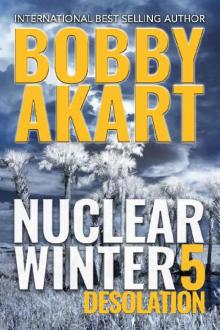 Nuclear Winter Desolation: Post Apocalyptic Survival Thriller (Nuclear Winter Series Book 5)
Nuclear Winter Desolation: Post Apocalyptic Survival Thriller (Nuclear Winter Series Book 5)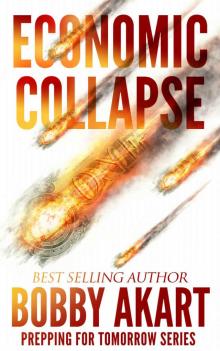 Economic Collapse (Prepping for Tomorrow Book 2)
Economic Collapse (Prepping for Tomorrow Book 2)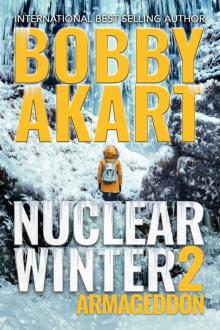 Nuclear Winter Armageddon
Nuclear Winter Armageddon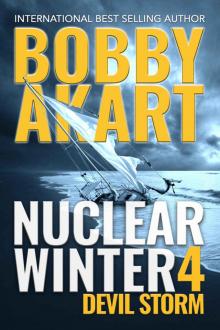 Nuclear Winter Devil Storm
Nuclear Winter Devil Storm Virus Hunters 3: A Medical Thriller
Virus Hunters 3: A Medical Thriller Doomsday Civil War: A Post-Apocalyptic Survival Thriller (The Doomsday Series Book 5)
Doomsday Civil War: A Post-Apocalyptic Survival Thriller (The Doomsday Series Book 5) Asteroid Destruction
Asteroid Destruction Geostorm the Shift
Geostorm the Shift Asteroid Discovery
Asteroid Discovery Virus Hunters 2: A Medical Thriller
Virus Hunters 2: A Medical Thriller Geostorm The Shift: A Post-Apocalyptic EMP Survival Thriller (The Geostorm Series Book 1)
Geostorm The Shift: A Post-Apocalyptic EMP Survival Thriller (The Geostorm Series Book 1) Asteroid Diversion
Asteroid Diversion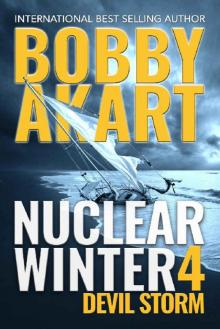 Nuclear Winter Devil Storm: Post Apocalyptic Survival Thriller (Nuclear Winter Series Book 4)
Nuclear Winter Devil Storm: Post Apocalyptic Survival Thriller (Nuclear Winter Series Book 4) Geostorm The Pulse: A Post Apocalyptic EMP Survival Thriller (The Geostorm Series Book 2)
Geostorm The Pulse: A Post Apocalyptic EMP Survival Thriller (The Geostorm Series Book 2) Yellowstone: Survival: A Post-Apocalyptic Survival Thriller (The Yellowstone Series Book 4)
Yellowstone: Survival: A Post-Apocalyptic Survival Thriller (The Yellowstone Series Book 4) Nuclear Winter First Strike: Post-Apocalyptic Survival Thriller
Nuclear Winter First Strike: Post-Apocalyptic Survival Thriller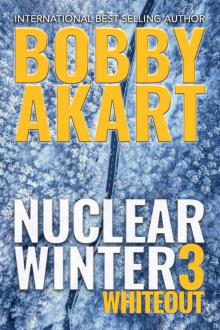 Nuclear Winter Whiteout
Nuclear Winter Whiteout Doomsday Anarchy
Doomsday Anarchy Pandemic: Level 6: A Post Apocalyptic Medical Thriller Fiction Series (The Pandemic Series Book 3)
Pandemic: Level 6: A Post Apocalyptic Medical Thriller Fiction Series (The Pandemic Series Book 3) Martial Law
Martial Law Odessa Reborn: A Terrorism Thriller (Gunner Fox Book 4)
Odessa Reborn: A Terrorism Thriller (Gunner Fox Book 4)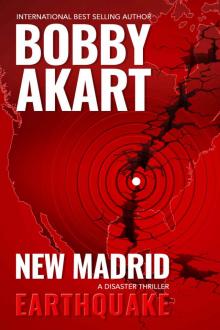 New Madrid Earthquake
New Madrid Earthquake Beyond Borders: Post Apocalyptic EMP Survival Fiction (The Lone Star Series Book 2)
Beyond Borders: Post Apocalyptic EMP Survival Fiction (The Lone Star Series Book 2)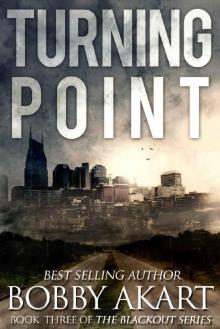 The Blackout Series (Book 3): Turning Point
The Blackout Series (Book 3): Turning Point Patriot's Farewell: A Political Thriller Fiction Series (Boston Brahmin Political Thrillers Book 7)
Patriot's Farewell: A Political Thriller Fiction Series (Boston Brahmin Political Thrillers Book 7) Lines in the Sand_Post Apocalyptic EMP Survival Fiction
Lines in the Sand_Post Apocalyptic EMP Survival Fiction The Mechanics: A Post-Apocalyptic Fiction Series
The Mechanics: A Post-Apocalyptic Fiction Series The Loyal Nine
The Loyal Nine Axis of Evil
Axis of Evil Axis of Evil: Post Apocalyptic EMP Survival Fiction (The Lone Star Series Book 1)
Axis of Evil: Post Apocalyptic EMP Survival Fiction (The Lone Star Series Book 1) Lines in the Sand: Post Apocalyptic EMP Survival Fiction (The Lone Star Series Book 3)
Lines in the Sand: Post Apocalyptic EMP Survival Fiction (The Lone Star Series Book 3) Odessa Strikes
Odessa Strikes The Blackout Series (Book 4): Shiloh Ranch
The Blackout Series (Book 4): Shiloh Ranch Hornet's Nest: A Post Apocalyptic EMP Survival Fiction Series (The Blackout Series Book 5)
Hornet's Nest: A Post Apocalyptic EMP Survival Fiction Series (The Blackout Series Book 5) Yellowstone: Fallout: A Post-Apocalyptic Survival Thriller (The Yellowstone Series Book 3)
Yellowstone: Fallout: A Post-Apocalyptic Survival Thriller (The Yellowstone Series Book 3) Electromagnetic Pulse
Electromagnetic Pulse Texas Strong: Post Apocalyptic EMP Survival Fiction (The Lone Star Series Book 4)
Texas Strong: Post Apocalyptic EMP Survival Fiction (The Lone Star Series Book 4) Fifth Column_Post Apocalyptic EMP Survival Fiction
Fifth Column_Post Apocalyptic EMP Survival Fiction Patriot's Farewell
Patriot's Farewell Texas Strong_Post Apocalyptic EMP Survival Fiction
Texas Strong_Post Apocalyptic EMP Survival Fiction Pandemic: The Innocents: A Post-Apocalyptic Medical Thriller Fiction Series (The Pandemic Series Book 2)
Pandemic: The Innocents: A Post-Apocalyptic Medical Thriller Fiction Series (The Pandemic Series Book 2) Shiloh Ranch: A Post Apocalyptic EMP Survival Fiction Series (The Blackout Series Book 4)
Shiloh Ranch: A Post Apocalyptic EMP Survival Fiction Series (The Blackout Series Book 4) Cyber Attack
Cyber Attack Beyond Borders
Beyond Borders Choose Freedom: A Post-Apocalyptic Fiction Series (The Boston Brahmin Book 6)
Choose Freedom: A Post-Apocalyptic Fiction Series (The Boston Brahmin Book 6) False Flag
False Flag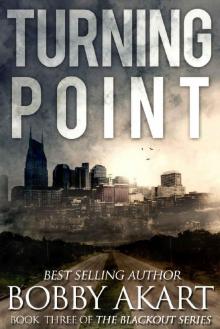 Turning Point: A Post Apocalyptic EMP Survival Fiction Series (The Blackout Series Book 3)
Turning Point: A Post Apocalyptic EMP Survival Fiction Series (The Blackout Series Book 3) Nuclear Winter First Strike
Nuclear Winter First Strike Pandemic: Beginnings: A Post-Apocalyptic Medical Thriller Fiction Series (The Pandemic Series Book 1)
Pandemic: Beginnings: A Post-Apocalyptic Medical Thriller Fiction Series (The Pandemic Series Book 1) Devil's Homecoming: A Post Apocalyptic EMP Survival Fiction Series (The Blackout Series Book 6)
Devil's Homecoming: A Post Apocalyptic EMP Survival Fiction Series (The Blackout Series Book 6) The Blackout Series (Book 6): Devil's Homecoming
The Blackout Series (Book 6): Devil's Homecoming Yellowstone: Inferno: A Post-Apocalyptic Survival Thriller (The Yellowstone Series Book 2)
Yellowstone: Inferno: A Post-Apocalyptic Survival Thriller (The Yellowstone Series Book 2) Fifth Column: Post Apocalyptic EMP Survival Fiction (The Lone Star Series Book 5)
Fifth Column: Post Apocalyptic EMP Survival Fiction (The Lone Star Series Book 5) Yellowstone: Hellfire: A Post-Apocalyptic Survival Thriller (The Yellowstone Series Book 1)
Yellowstone: Hellfire: A Post-Apocalyptic Survival Thriller (The Yellowstone Series Book 1) The Blackout Series (Book 2): Zero Hour
The Blackout Series (Book 2): Zero Hour Suicide Six: Post Apocalyptic EMP Survival Fiction (The Lone Star Series Book 6)
Suicide Six: Post Apocalyptic EMP Survival Fiction (The Lone Star Series Book 6) Suicide Six_Post Apocalyptic EMP Survival Fiction
Suicide Six_Post Apocalyptic EMP Survival Fiction Zero Hour: A Post-Apocalyptic EMP Survival Fiction Series (The Blackout Series Book 2)
Zero Hour: A Post-Apocalyptic EMP Survival Fiction Series (The Blackout Series Book 2) Beyond Borders_Post Apocalyptic EMP Survival Fiction
Beyond Borders_Post Apocalyptic EMP Survival Fiction Pandemic: Quietus: A Post-Apocalyptic Dystopian Fiction Series (The Pandemic Series Book 4)
Pandemic: Quietus: A Post-Apocalyptic Dystopian Fiction Series (The Pandemic Series Book 4) 36 Hours: A Post-Apocalyptic EMP Survival Fiction Series
36 Hours: A Post-Apocalyptic EMP Survival Fiction Series Cyber Warfare
Cyber Warfare